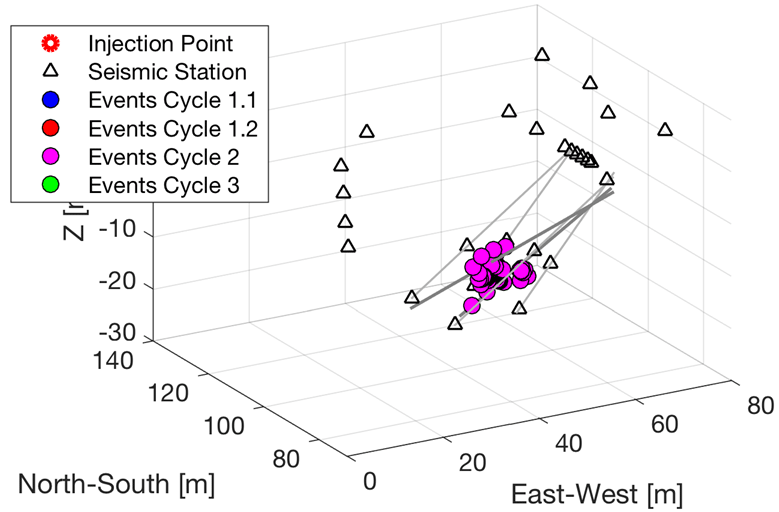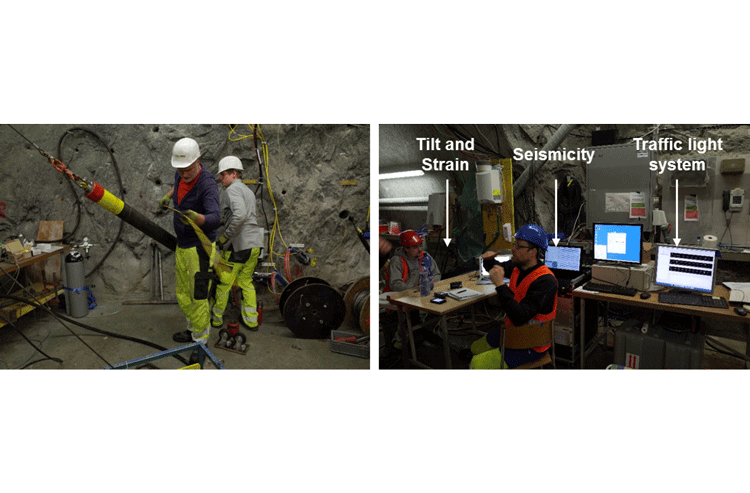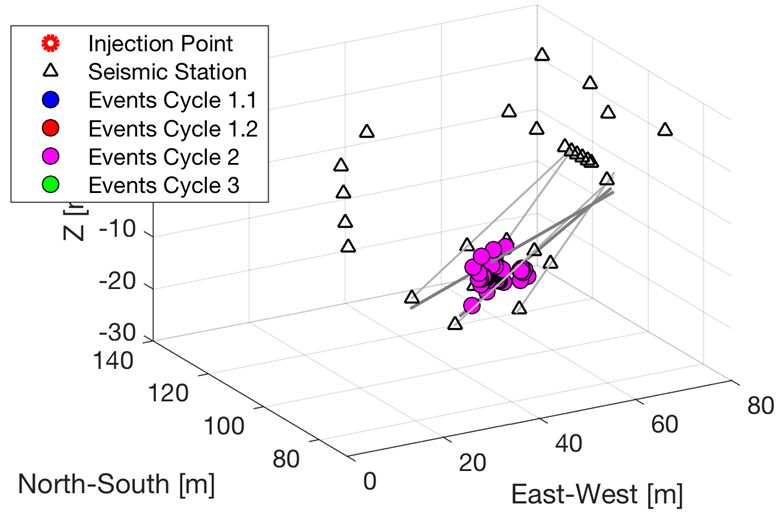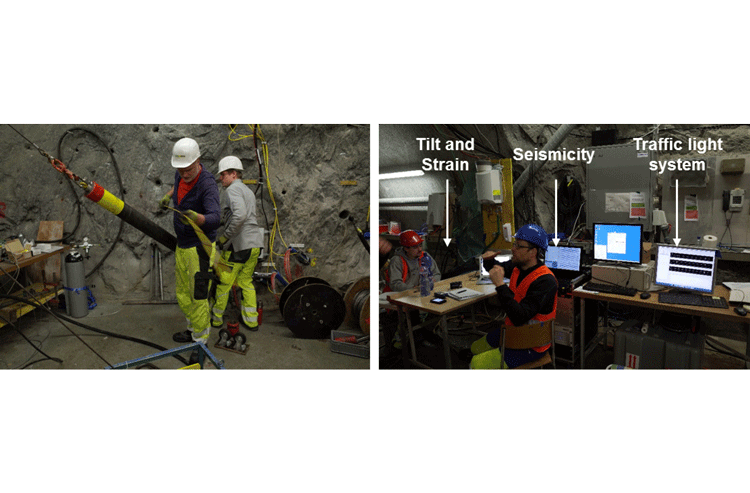Big Learnings on a Smaller Scale
Successful Hydraulic Stimulation at the Grimsel Test Site
Within the “In-Situ Stimulation and Circulation (ISC)” experiment (Demo-1) at Nagra’s Grimsel rock laboratory, a fundamental challenge related to geothermal exploration is addressed: generating an efficient heat exchanger without triggering potentially felt or damaging earthquakes. In February 2017, after a two-year long preparation phase, an interdisciplinary team with members of ETH Zurich and the University of Neuchâtel successfully conducted six stimulation tests to answer this challenge. They aimed to trigger shear dislocations along pre-existing faults in the granite to understand the relationships between pore pressure increases, its propagation in the reservoir, injectivity rates, strains, tilts and the seismic response. The analyses of the data collected will take place in the second phase of the SCCER-SoE.
The ten days lasting stimulation phase was composed of three cycles: The first and last cycle were conducted pressure-controlled. They aimed to quantify the initial and final injectivity as well as the pressure required to activate the pre-existing faults. The actual stimulation test was performed during the second cycle, where the injection rate was step-wise increased from 10 to 35 l/min (each rate was held constant for about ten minutes).
Various types of pre-existing structures have been stimulated increasing the injectivity rate by a factor of up to 1’850 (initial rates from 0.0006 l/min/MPa to 0.8 l/min/MPa vs. final rates from 0.4 to 1.7 l/min/MPa). The seismic activity showed a very heterogeneous result with total numbers of microearthquakes for the individual tests ranging between 6 and 940. Figure 1 shows the packer system that was utilized for the stimulation tests (left) and parts of the monitoring set-up (right). Figure 2 shows the microearthquakes for one test that were recorded and localized automatically during the second cycle.
A manifold monitoring system was in place to observe and register even smallest changes in the rock. It consisted of 32 seismic sensors, three tiltmeters, 60 strains sensors, 150 m of strain sensing cable and 13 pressure monitoring intervals.




